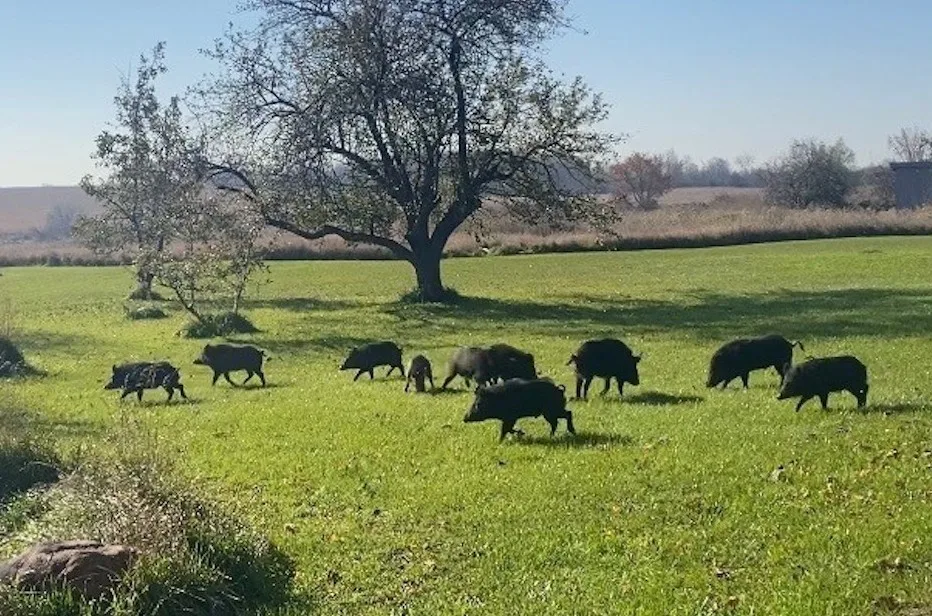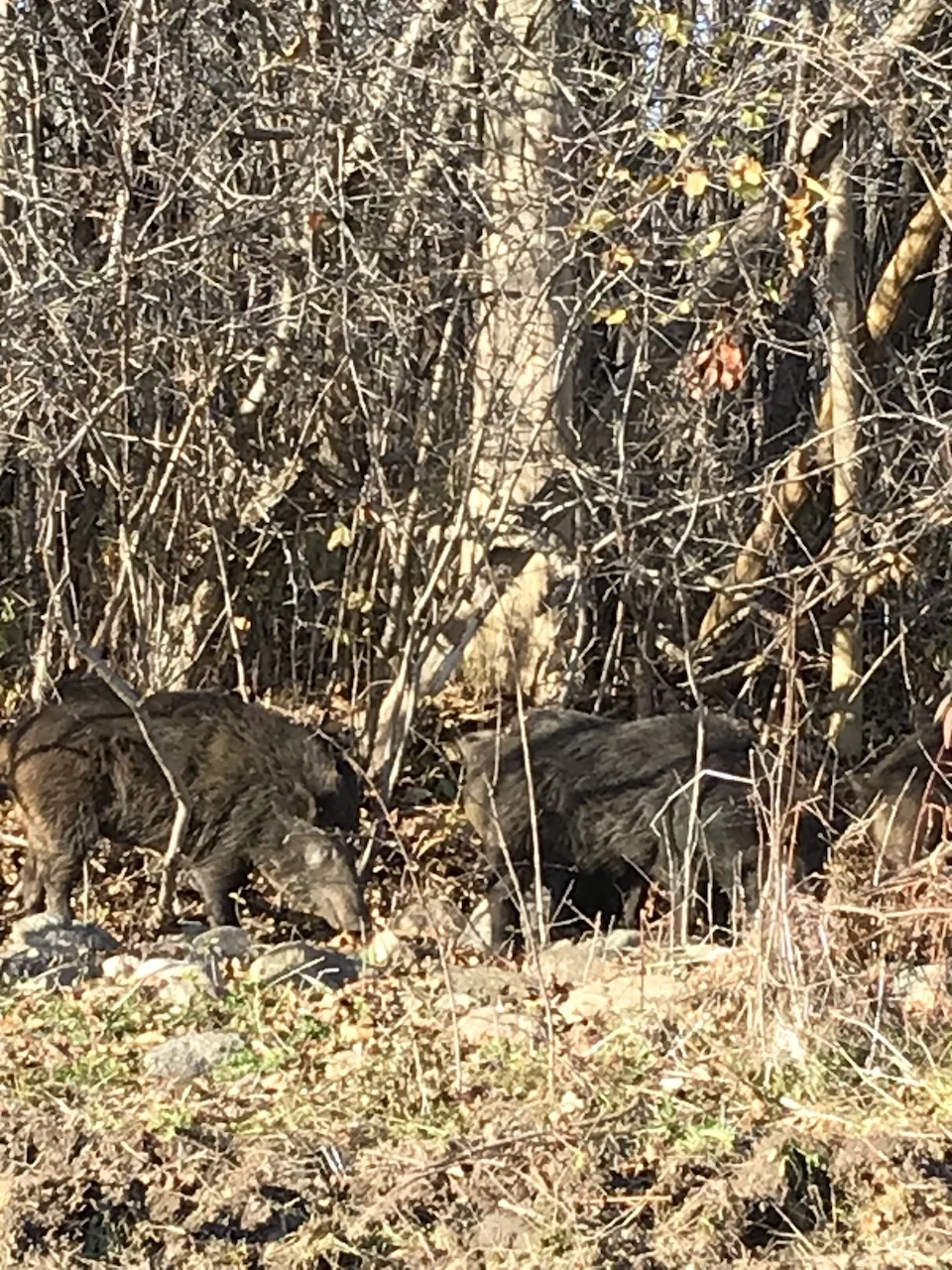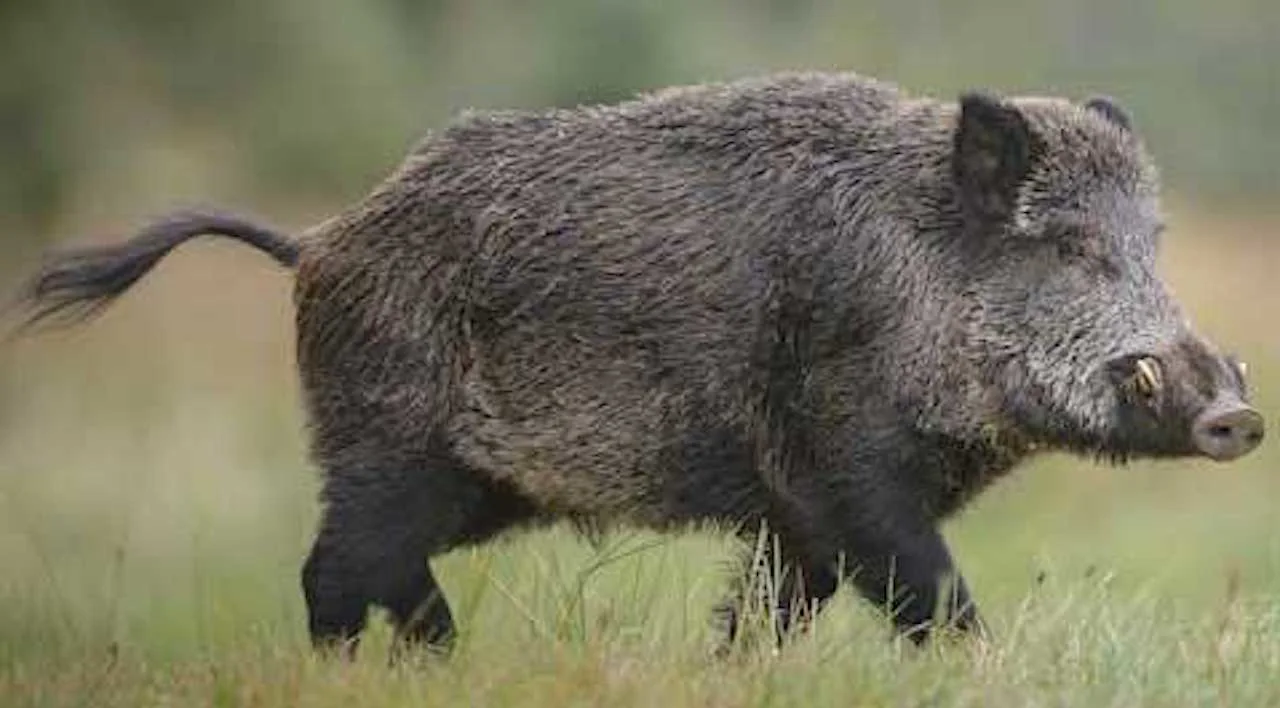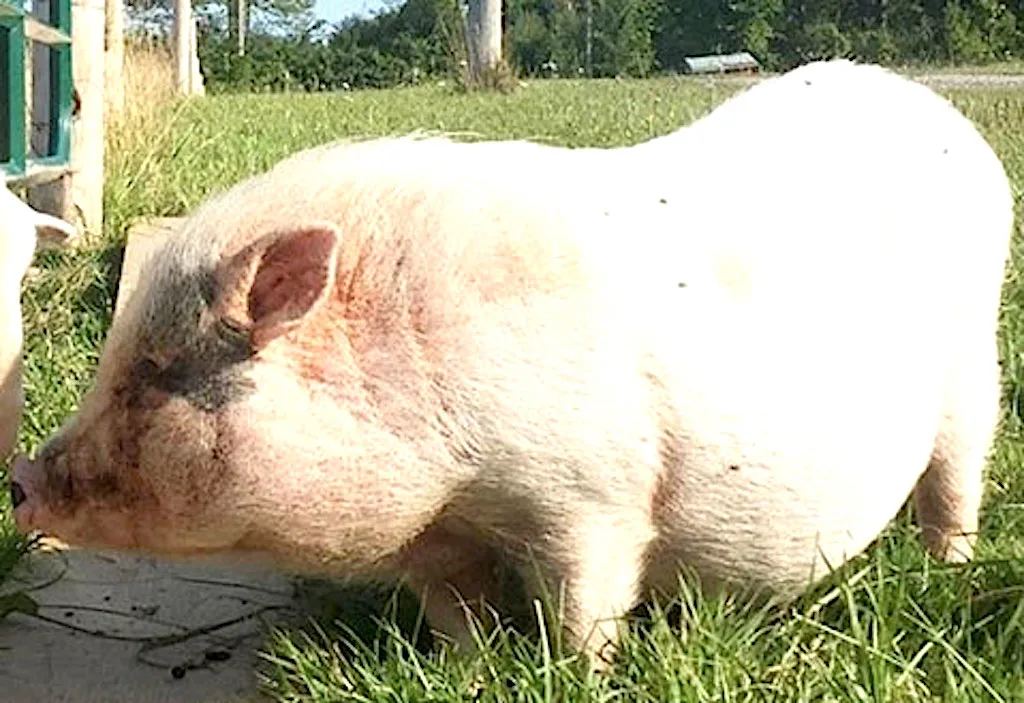
Wild pigs seen roaming Ontario city, but government is on their tails
There is no firm evidence to suggest wild pigs are established in Ontario, but sightings of them continue to be submitted --- an indication this could happen unless continued actions are taken, says the Ministry of Northern Development, Mines, Natural Resources and Forestry (NDMNRF).
A group of feral pigs is on the lam in Pickering, Ont., but the government is already in pursuit to catch these invasive species before any ecological damage is caused.
The wild boars were first spotted in the southern Ontario city earlier this month, prompting the Ministry of Northern Development, Mines, Natural Resources and Forestry (NDMNRF) to set up one trap. It may establish more if there is evidence of the pigs frequenting another area.
RELATED: Ontario officials watch invasive pig numbers so they don't go wild
The trap has placed in a location in northern Pickering where there is evidence of pig activity and where local residents have observed them, according to Morgan Kerekes, media and issues advisor with the Ministry of Northern Development, Mines, Natural Resources and Forestry (NDMNRF).
There is evidence of approximately 14 wild pigs in the sounder.
"The NDMNRF wild pig team have set up a live trap with bait to draw the pigs in. This may take some time, as there are still many food options with crop fields in the area. No pigs have been caught, yet," said Kerekes, in an email to The Weather Network on Friday.

The NDMNRF has found evidence of approximately 14 wild pigs in a sounder that was spotted in Pickering, Ont., this month. (Ryan Johnstone via Ontario Ministry of Northern Development, Mines, Natural Resources and Forestry (NDMNRF))
REPORTS CONTINUE TO SURFACE
Wild pigs are an invasive species as they are not native to Ontario. At this time, there is no firm evidence to suggest wild pigs are established in the province, but sightings of them continue to be submitted --- an indication they could become established unless continued actions are taken, Kerekes said.
Currently, most of the wild pig sightings appear to be recently escaped livestock, including domesticated pigs, pot-bellied pigs and farmed Eurasian wild boar.
"We prioritize the most concerning sightings for on the ground followup and we are prepared to remove wild pigs if there is any evidence of wild pigs breeding and self-sustaining in Ontario," said Kerekes. "Continued vigilance and monitoring is critical to prevent [the] establishment of this invasive species."

(Katrina Wisniewski via Ontario Ministry of Northern Development, Mines, Natural Resources and Forestry (NDMNRF))
'ECOLOGICAL TRAIN WRECK'
Wild pigs can have tremendous impacts on the natural environment and the agricultural industry. They are considered one of the most damaging invasive species in the United States.
In a previous interview with The Weather Network in March 2021, Erin Koen, a scientist formerly of the NDMNRF, said they have been called an "ecological train wreck" due to trampling, wallowing and rooting in sensitive habitats, and the major damage they can cause to farmlands and stored crops.
As well, invasive pigs can also impact native plants and animals directly through predation and indirectly through competition for food and destruction of habitat. They have the ability to spread disease to native wildlife and livestock, adds Koen.

Invasive pig with the typical features of wild boar. (Ontario Ministry of Northern Development, Mines, Natural Resources and Forestry (NDMNRF).
"The Ontario government is committed to protecting the environment for future generations. That is why we are taking action to prevent a wild pig population from establishing in our province. We recognize the importance of the prevention, early detection, rapid response, and eradication of invasive species," said Koen.
To date, several wild pigs have successfully been removed from the environment, according to the NDMNRF. For some of the high-priority sightings that were investigated, pigs returned to their enclosures, or were otherwise recaptured or removed.
In terms of where they are likely to be spotted, Koen said wild pigs are less likely to be detected in areas with dense forest cover and where there are fewer people to report them.
While the reports from the public are critical to the government's understanding of the situation in Ontario, the accounts can't be used with ease to get a complete estimate of their population size.

Wild pig with the typical features of a pot-bellied pig. (Ontario Ministry of Northern Development, Mines, Natural Resources and Forestry (NDMNRF).
In fact, some wild pigs are domestic animals that have escaped and "we rarely know" if the animal has been returned home after the report, she said.
NEW REGULATIONS START IN JANUARY 2022
To combat the problem and prevent an environmental disaster, the Ontario government has added some new legislation.
As of Jan. 1, 2022, live pigs won't be permitted in Ontario's provincial parks or conservation reserves, and it will be illegal to release any pig into the natural environment.
If a pig escapes or is otherwise released, owners must immediately notify the ministry at wildpigs@ontario.ca or 1-833-933-2355 to try to capture the pig as soon as possible.
In addition to those rules, hunting pigs in Ontario will be illegal as of that date. However, if a wild pig is shot for protection of property, it is the person's responsibility to ensure the animal is feral and is following all relevant federal, provincial, and municipal legislation regarding trespass, licensing and discharge of firearms.
MUCH DIFFERENT STORY STATESIDE
The situation south of the border is much worse, as many states have encountered wild pig problems. In fact, there are estimates of 6-9 million of the invasive species running wild across at least 42 states and three territories.
They also take a significant financial toll on the economy. While the exact figure is difficult to finalize, the U.S. Department of Agriculture estimates the tally is about US$2.5 billion annually.
Fortunately for Ontario, it still has time to prevent the establishment of wild pig populations in the province, Koen stated.
"The ministry asks the public to continue to report all wild pig sightings to help us understand the locations and number of invasive wild pigs in the province and inform further management," said Koen.
Those who have spotted a wild pig or have information about a sighting should report it to the province by sending an email to wildpigs@ontario.ca. More information on the pigs can be found here. As well, the agency's Annual Report on Invasive Wild Pig Sightings: 2019–2020 provides maps of the sightings reported in Ontario and a graph showing the number of reports received.
Thumbnail courtesy of Ryan Johnstone via Ontario Ministry of Northern Development, Mines, Natural Resources and Forestry (NDMNRF).
Follow Nathan Howes on Twitter.










